Complete Guide to Repairing Car Headlights Effectively

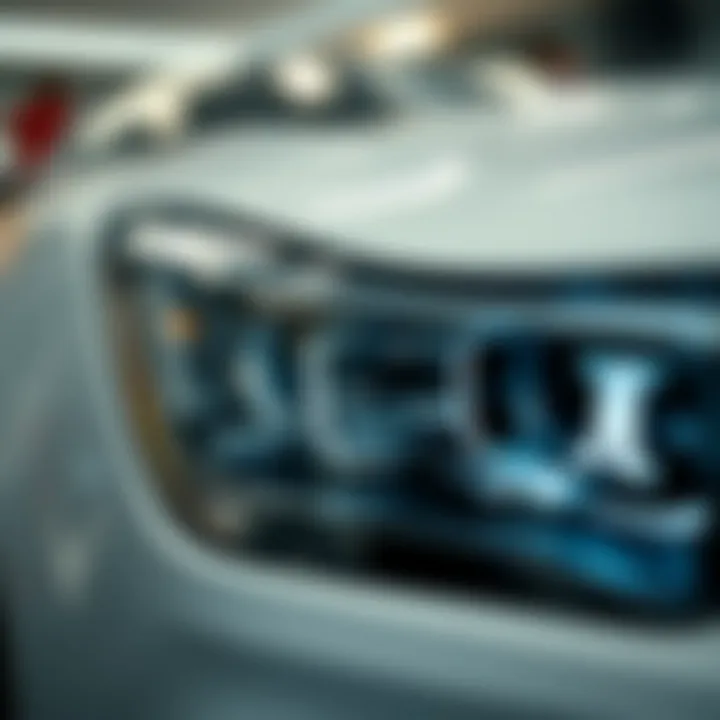
Intro
Having clear and functioning headlights is paramount for safe driving, especially during the night or in poor weather conditions. Headlights are not just a regulatory requirement; they provide visibility that could very well be the difference between a safe journey and a close call. This guide is designed to walk both seasoned car owners and novices through the labyrinth of fixing headlights. From understanding the types of headlights you might encounter to the nitty-gritty of replacement procedures, this article aims to deepen your automotive knowledge and enhance your repair skills.
Product Quality Evaluations
When delving into the world of headlights, it’s crucial to assess the product quality before making any decisions. Lights come in various styles, functionalities, and price points, making it essential to identify what best suits your vehicle and needs.
Methodology for Evaluating Quality
- Brightness: Measured in lumens, brightness significantly impacts visibility. Higher lumen ratings usually equate to stronger light output, although it can vary based on the design of the lens.
- Durability: Look for headlights constructed with resilient materials like polycarbonate, which resist yellowing and physical damage from road debris. Overly brittle lights can crack easily, jeopardizing safety.
- Energy Efficiency: LED options are gaining traction for their low energy consumption compared to traditional halogen bulbs. Energy-efficient lights can save you money in the long run while also offering longer service life.
Comparison of Different Models
- Halogen Headlights: Commonly used in older car models, they are cheaper, but their lifespan is significantly shorter compared to LEDs.
- HID (High-Intensity Discharge) Lights: Offer a sharper white light and better illumination distance; however, their installation can be more complicated.
- LED Headlights: Although initially more expensive, they provide excellent longevity and better energy efficiency.
"Always opt for the light that fits your vehicle while meeting legal requirements. Don’t just go for brightness; consider the overall functionality for driving conditions."
Expert Reviews and Recommendations
Understanding which products stand out in the marketplace can save time and effort when replacing or repairing your headlights. Expert reviews often break down the minutiae, allowing buyers to make informed decisions.
Comparisons of Similar Models
Look at leading headlights such as:
- Philips 1 Vision Plus: Known for better visibility and a long lifespan.
- Sylvania SilverStar Ultra: A frequently recommended model for those in search of halogen lights due to its balance of brightness and cost.
Tips for Buyers
- Read Customer Reviews: Honest feedback often highlights the pros and cons of a product beyond technical specifications.
- Check Compatibility: Always ensure that the model fits your specific vehicle make and model.
- Warranty Considerations: A good warranty can indicate manufacturer confidence in their product; it also provides recourse if things go awry.
Knowing what to look for in headlights can significantly impact your driving experience. The subsequent segments will guide you through practical steps in fixing your vehicle's headlights, offering insights that can turn a frustrating challenge into a manageable task.
Understanding Headlight Functionality
Headlights are more than just a pair of lights on the front of a car; they are vital for safe driving, especially during inclement weather or at night. Understanding how headlights work not only helps in appreciating their role in road safety but also informs the driver when something goes awry.
Importance of Headlights
Headlights serve a fundamental duty: they illuminate the road ahead, making visibility possible during darkness or adverse weather conditions. Imagine driving on a pitch-black road; without functioning headlights, the risks increase significantly. According to the National Highway Traffic Safety Administration, nearly half of all deadly crashes occur during nighttime.
Moreover, headlights enhance vehicle visibility to other drivers. A well-lit vehicle is less likely to be involved in an accident, as it signals its presence effectively. In urban settings, headlights also help pedestrians see approaching cars. In essence, headlights contribute to the overall tapestry of road safety—fundamental in preventing mishaps and ensuring that everyone travels with a reasonable degree of caution.
Types of Headlights
Headlights come in various types, each with unique advantages and limitations. Understanding these types can guide vehicle owners towards making informed decisions when replacing or upgrading their headlights.
Halogen Headlights
Halogen headlights are the traditional choice found in many vehicles. Their principle of operation is straightforward: they contain a tungsten filament surrounded by halogen gas, which increases the bulb’s efficiency and lifespan. One of the most notable characteristics of halogen bulbs is their relatively low cost, making them a budget-friendly option for maintenance. Furthermore, they deliver a warm light that many drivers prefer.
However, halogen headlights tend to generate substantial heat, which can lead to other components in the headlight assembly overheating—especially if the bulbs are improperly installed. While they may be sufficient for most driving conditions, they do not offer the brightness or longevity found in more advanced technologies.
LED Headlights
Light Emitting Diodes, or LEDs, are gaining ground rapidly in the automotive industry. They shine brighter than halogen lights while consuming less power. One of their standout characteristics is lifespan; they can last up to 25,000 hours, which is significantly longer than halogen bulbs. This longevity means less frequent replacements, contributing to reduced long-term costs.
Furthermore, LEDs provide excellent light quality, offering better visibility without causing glare for oncoming drivers. However, they do come with a higher upfront cost. Installation can sometimes be more complex, requiring a professional touch if the car's design isn't compatible.
HID Headlights
High-Intensity Discharge headlights—or HIDs—are another modern option that offers unique advantages. Unlike halogen lights that use a filament, HIDs burn a gas to produce light, which yields a brightness that beats both halogen and LED. This brightness can significantly improve nighttime visibility, making driving safer in dark conditions.
A notable feature of HID lighting is its striking color temperature, which can reach shades of blue-white light, mimicking daylight. While this may be visually appealing, it can sometimes be too much for some drivers, creating an uncomfortable glare.
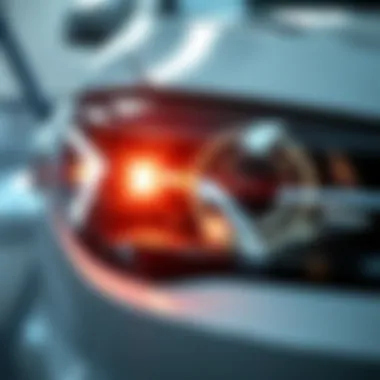
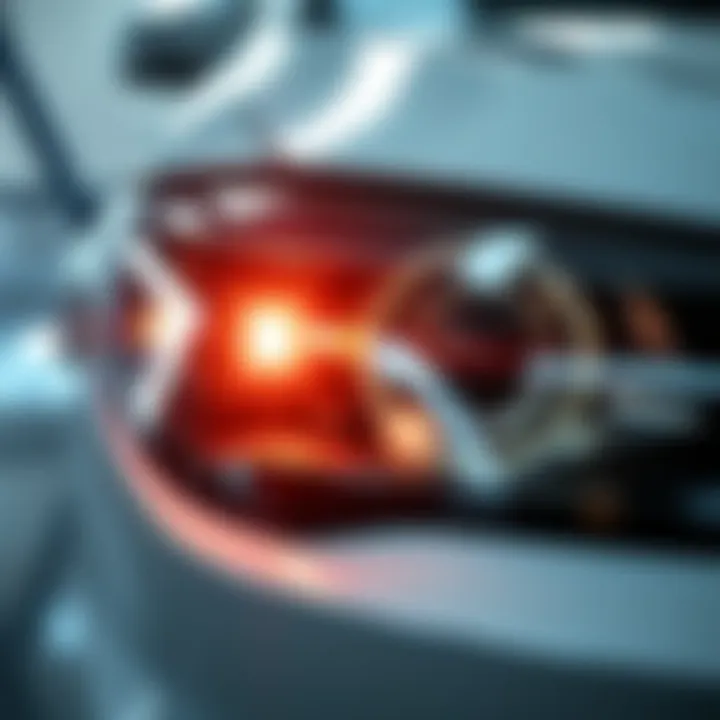
On the downside, HIDs can be pricier to replace, and unless properly aligned, they can cause issues with glare for other road users. Yet, when they are functioning correctly, HIDs provide an impressive mix of visibility and style.
Understanding these different types of headlights equips vehicle owners with essential knowledge when making decisions about repairs or upgrades. By considering their unique characteristics, one can select headlights that align with specific driving needs and preferences.
Diagnosing Headlight Issues
When it comes to ensuring your vehicle is roadworthy, one of the fundamental aspects is effectively diagnosing headlight issues. Headlights are not just accessories; they are critical components that provide illumination for nighttime driving and enhance safety during poor weather conditions. If headlights are malfunctioning, they can lead to serious visibility problems that put not only the driver at risk but also other road users. Hence, identifying the root cause of headlight failure early on can save you from costly repairs and potential hazards on the road. This section will break down the key symptoms of headlight failure and the visual checks that can easily be done at home to pinpoint issues.
Common Symptoms of Headlight Failure
Recognizing the signs of headlight failure is the first step in the diagnosis process. Here are some common symptoms that may indicate issues:
- Dim Headlights: If your headlights produce less light than usual, it can be a sign that the bulbs are nearing the end of their lifespan or that there’s an electrical issue.
- Flickering Headlights: Flickering lights can signal a loose connection or a problem with the bulb itself.
- Uneven Light Distribution: If one headlight is brighter than the other or if the beam pattern doesn't look right, this could point to misalignment or a damaged housing.
- Total Outage: Sometimes, headlights fail completely, which might indicate a blown fuse or a severe electrical issue.
Understanding these symptoms helps you to decide if it’s a simple bulb replacement or if more investigative work is needed.
Visual Checks
Visual inspections are one of the most straightforward ways to assess headlight functionality. Taking a closer look at both the bulbs and wiring can provide insights into what the problem might be.
Inspecting Bulbs
When it comes to inspecting bulbs, the key aspect is to look for any signs of damage or wear. The condition of the bulb will directly affect the brightness and overall function of the headlights.
The main characteristic of inspecting bulbs is that it requires minimal tools and can often be done without professional help. This makes it a popular choice among car owners who want to troubleshoot issues themselves before seeking professional assistance.
However, it’s vital to remember that not all bulbs are created equal; they come in various types such as halogen, LED, and HID, each with its unique features and lifespan. This unique feature of different bulb types provides options, but also demands that drivers familiarize themselves with their specific vehicle’s requirement. For instance, using the wrong bulb type can lead to poor performance or even damage to the headlight assembly.
Examining Wiring
Examining wiring is equally important, as faulty wiring can be a culprit behind headlight issues. Checking the integrity of the wiring ensures that there are no breaks, corrosion, or loose connections that could interrupt the electrical flow to the headlights.
The key characteristic of examining wiring lies in its role as the lifeline for headlight functionality. A thorough check can prevent minor problems from escalating into costly repairs down the line. It’s a beneficial approach that often uncovers underlying issues that may not yet have manifested as symptoms.
Wiring can show unique features such as fraying insulation or discoloration, which can indicate overheating or other electrical issues. Understanding these indicators is crucial for any driver wanting to maintain safe headlights and, ultimately, make their driving experience safer.
Tools and Materials Needed
Understanding the tools and materials needed for headlight repair is crucial for anyone looking to dive into the realm of automotive maintenance. Without proper tools, you might as well be trying to dig a hole with a spoon. The right set of equipment not only makes the job more efficient but also ensures safety and effectiveness throughout the process. Using subpar tools can lead to frustrating setbacks, making this step essential in your headlight repair journey.
Essential Tools for Headlight Repair
When it comes to tackling headlight issues, a well-equipped toolbox can make all the difference. Below, we’ll shine a light on the essential tools that you will need, so you can approach repairs with confidence.
Socket Wrench Set
A socket wrench set is your best friend in any mechanical job, especially when dealing with headlight assemblies. These tools are designed to fit over nut and bolt heads, giving you a grip that’s hard to beat. What sets this tool apart is its generous range of socket sizes which allows you to tackle any fastener that your vehicle might throw at you.
The versatility of a socket wrench makes it a preferred pick for automotive repairs. While it can sometimes be more cumbersome than a traditional wrench, the time saved during quick repairs generally outweighs the added weight. When you’re elbow-deep in a project, sometimes getting a job done efficiently is more important than hauling out every tool you have.
Flathead and Phillips Screwdrivers
The humble flathead and Phillips screwdrivers can often be overlooked, but these are two essential tools that pack a punch when you’re in the thick of it. These screwdrivers help with a variety of tasks, from removing screws on the headlight cover to adjusting fittings once the new bulb is in. Their significance cannot be overstated.
Flathead screwdrivers are particularly useful for prying things apart, while Phillips screwdrivers tend to provide a better grip in crosshead screws. Both types should be a staple in your toolbox. It’s easy to pick up a good set without breaking the bank, making them an accessible choice for any automotive DIYer.
Multimeter
A multimeter might sound like something from a sci-fi movie, but don’t be intimidated by its name. This tool is invaluable for diagnosing electrical issues – it measures voltage, current, and resistance. Why is this important for headlight repair? Well, flickering lights and dim bulbs might not just be a bulb issue; they could be hinting at something more complex in the electrical wiring.
A key feature of a multimeter is its ability to provide precise readings that help in identifying problems quickly. While it requires a bit of a learning curve, mastering the multimeter is like having a cheat sheet for electrical troubleshooting. It shines a light on hidden issues that a casual inspection might miss. Just be aware that if you’re not comfortable working with electrical systems, this tool might require a friendly tutorial or two.
Recommended Replacement Parts
In addition to tools, having the right replacement parts is equally as critical to ensuring a successful headlight repair. You don’t want to find yourself halfway through the job only to realize you’re missing a crucial component.
Bulb Types

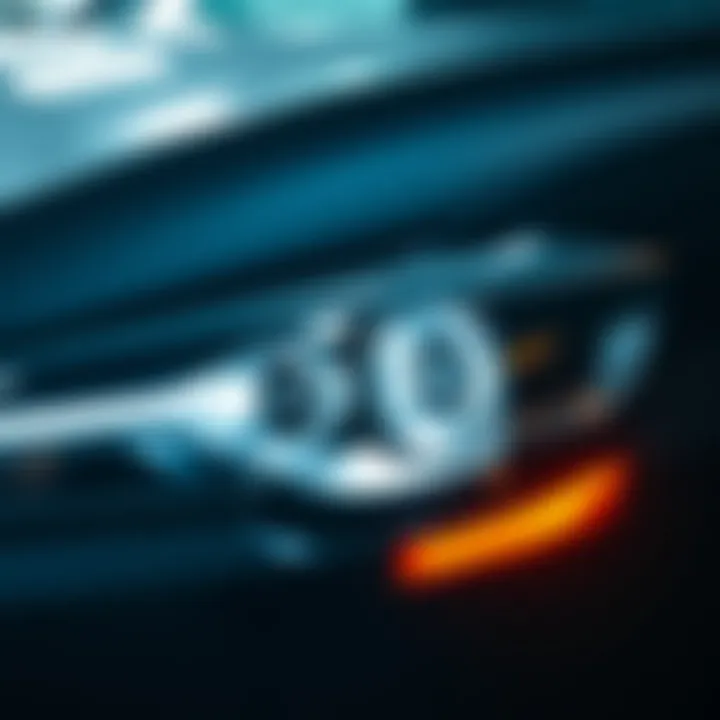
Choosing the right bulb type can significantly affect your vehicle’s lighting performance. Halogen, LED, and HID all have distinct characteristics, which impacts their efficiency and longevity. Halogen bulbs are typically the go-to for many vehicles due to their affordability and ease of installation. However, they may not be the most energy-efficient option compared to LEDs, which have a longer lifespan and lower power consumption.
While some drivers swear by the brightness of HID bulbs in flooding the road with light, these can be more complex to install and generally come with a higher price tag. Ultimately, considering the specific needs of your vehicle and driving conditions can help you make the best choice.
Ballasts and Connectors
For those opting for HID or LED lights, understanding ballasts and connectors becomes vital. The ballast regulates the electrical current that flows to the bulbs, allowing them to operate at their full potential. In many cases, your headlight issue might not lie with the bulb itself but with a faulty ballast, making this an essential component to check.
Connectors, on the other hand, are equally important; they ensure a reliable connection between your wiring and the bulb. Inspecting both the ballasts and connectors is essential if you find your headlight flickering or failing to work at all. While these components can add a bit to your budget, they are integral to a well-functioning headlight system.
In summary, having the right tools and replacement parts on hand can make all the difference when it comes to fixing headlights. Taking the time to gather what you need will not only enhance your efficiency but could also save you from unexpected surprises along the way.
Step-by-Step Guide to Replace a Headlight Bulb
Replacing a headlight bulb can be a straightforward task that enhances road safety and improves visibility. Knowing how to do this not only saves you time and money but also empowers you as a vehicle owner to address basic car maintenance needs. A properly functioning headlight keeps you aware of your surroundings, while also ensuring that other drivers see you clearly. It’s not only about compliance with the law but also about protecting yourself and others on the road. In this guide, we will cover preparation steps, removal of the old bulb, and the installation of a new bulb.
Preparation Steps
Safety Precautions
When dealing with headlights, safety must be your first concern. Ensure that your vehicle is parked on a flat surface, and switch off the engine. Allow the headlights to cool down, if they were recently on, to avoid burns. Wear gloves to prevent oil from your hands transferring to the bulb, which can heat it unevenly and lead to faster burnout. Notably, working in an environment with good lighting can also help prevent unnecessary accidents and mistakes. It’s simple precautions like these that can make a significant difference in the overall repair experience.
- Key characteristic: Prioritize personal safety and the longevity of the new bulb.
- Benefit: Taking proper safety measures can prevent accidents.
- Unique feature: They require minimal effort but produce maximum security during vehicle maintenance.
Gaining Access to the Headlight Assembly
To replace a bulb, you must first access the headlight assembly. This can vary by vehicle make and model. Generally, you may need to remove the plastic covers or brackets that shield the headlight. Some cars may have a bulb access panel to avoid taking the entire assembly out. Consulting your owner's manual provides guidance tailored specifically to your car. Adaptability in approach is crucial, yet the overarching aim remains the same: to reach the bulb effectively.
- Key characteristic: Accessibility can depend on the vehicle design.
- Benefit: Gaining access correctly reduces the risk of damaging parts during replacement.
- Unique feature: Understanding the assembly layout allows for efficient repairs, preventing frustration.
Removing the Old Bulb
Once you have gained access to the headlight assembly, the next step involves carefully removing the old bulb. Grasp the bulb base firmly, but don’t yank it out; instead, give it a slight twist. If the bulb has a retention clip, you may need to undo this first. Be mindful of any residual fragments if the bulb has burned out; clear debris thoroughly to avoid contaminating the new bulb. Documentation or video tutorials can provide additional insights on variations among different cars, ensuring clarity.
Installing the New Bulb
With the old bulb out, you can now get ready to install the new one. Make sure the new bulb is the correct type, as mentioned in the vehicle’s manual. Handle it by the base to avoid touching the glass to preserve its function. To install, align the bulb correctly and gently twist it into place until you hear a click. If your vehicle design includes a retention clip, ensure it is secured properly. After the installation, turn on the headlights to confirm they’re functioning well. Keep an eye out for any flickering or dimming—it could indicate further wiring issues.
By following these simple, yet thorough steps, you can feel confident tackling this essential maintenance task, ensuring your car remains road-ready while improving your skills in auto care.
Troubleshooting Common Headlight Problems
When it comes to automotive upkeep, ensuring that headlights function properly is not just about convenience but also about safety. Faulty headlights can lead to poor visibility, increasing the chances of an accident. This section will help you dissect common headlight troubles, making it easier for you to spot the issues before they escalate. Understanding how to troubleshoot can save time and potentially expensive repair costs.
Dim Headlights
Dim headlights are a common symptom that many drivers overlook. Often, drivers assume it’s just the bulb aging out. However, it can be an indication of deeper issues affecting your car. Dimming lights mean lower visibility, which can make driving at night or in poor weather conditions particularly hazardous.
Checking Connections
When addressing dim headlights, checking the connections might be the first logical step. This involves ensuring that all terminals and plugs are secure. A loose connection can lead to diminished output as electrical currents struggle to flow properly. What makes checking connections notable is that it's an easy fix. A twist of the wrist can often resolve the issue, letting you shine bright again. However, it's important to note: too much jiggling or manipulating can lead to further loosening or even damage.
Unique feature worth highlighting: This method is inexpensive and doesn’t require special tools, making it accessible for any car owner. On the downside, the temporary nature of fixes stemming from simple connections may not fully eliminate the risk of recurring problems, urging motorists to be vigilant and revisit their diagnostics.
Testing Voltage Output
If your headlights are still lackluster after checking the connections, then testing voltage output could be next on the agenda. This process involves using a multimeter to measure the voltage reaching your headlight bulb. The reason this method shines is its precision. With the right setup, you can quickly determine if the issue lies in the power supply.
However, understanding the readings and interpreting them correctly can present a learning curve. This adds complexity, especially for those who may not be familiar with electrical systems. The advantage of testing voltage is that it provides concrete data to troubleshoot further — whether that means seeking repairs for the wiring or replacing the bulb entirely.
Flickering Lights
The flickering of headlights can be both distracting and dangerous. Sometimes they blink like a strobe light, but usually they just dim and brighten irregularly. This is not just a quirky feature of your car; it indicates an underlying issue worth investigating.
Inspecting the Switch
One possible cause for flickering can be a faulty switch. The headlight switch, used repeatedly, may wear out over time and lead to interruptions in electrical flow. Inspecting this switch is essential not just for functionality but for ensuring overall safety.
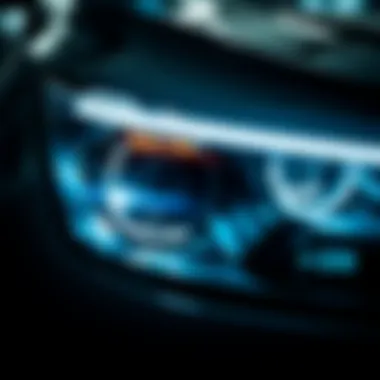
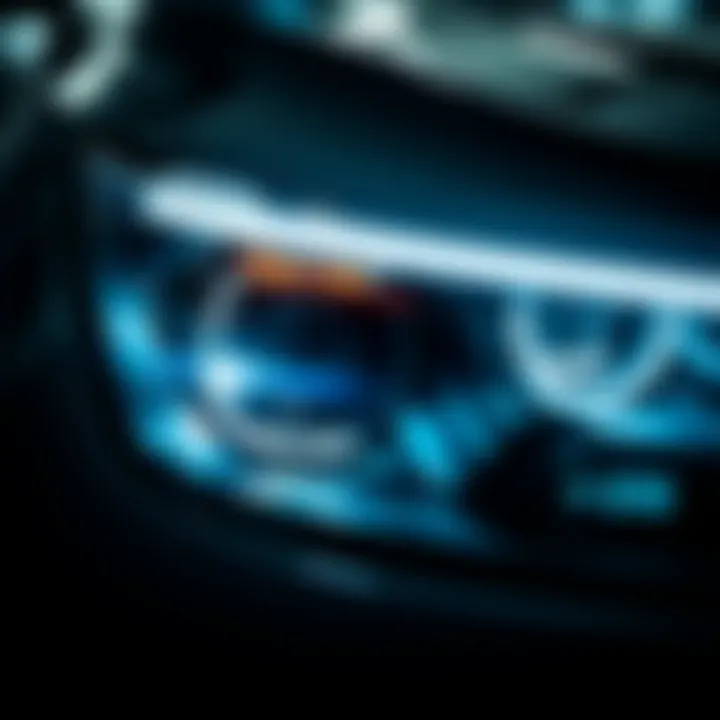
What’s key here is that fixing or replacing a switch can often restore normal function without much hefty work. The downside is that drivers might not notice problems until they get serious, meaning preventive checks should be scheduled regularly.
Examining Wiring Harness
Another area to dive into if you face flickering lights is examining the wiring harness. This wiring carries the electrical current to your headlights, and if there are any frayed wires or loose connections, you could see exactly the kind of flickering that could lead to an electrical failure. The beauty of examining the wiring harness is that it can provide insights not just to the headlights but other electrical components as well.
The trade-off here is the need for thorough understanding; a novice could inadvertently cause more damage while trying to fix it. But, for those handy with a wrench or screwdriver, a tight wiring harness can make all the difference.
Uneven Beam Pattern
A car’s headlight beam should ideally illuminate the road evenly in front of you. Uneven beam patterns can mislead, causing glare for other drivers or leaving portions of the road in darkness. Solving this issue is essential for safe driving.
Adjusting Headlight Aim
If you're noticing that one of your headlights is shining higher or lower than the other, adjusting the headlight aim might just do the trick. This is often as simple as turning a screw or two, depending on the make and model of the car.
The major plus here is that a correctly aligned headlight can dramatically improve visibility and minimize glare for oncoming traffic. However, it’s not a set it and forget it situation. Regular adjustments may be necessary, especially if the vehicle has been involved in an accident or has recently undergone suspension work.
Inspecting Housing Alignment
Lastly, if your beams are still acting out of sorts after adjustments, inspecting the housing alignment should be your next move. The housing keeps the bulb in the correct position. If it shifts due to an impact or wear and tear, then the light's angle can change. Checking the alignment can be straightforward, but it may involve some disassembly to get to the nuts and bolts.
The plus side? A correctly aligned housing ensures that the light is directed where it ought to be. However, the longer, more detailed inspection may be a bit overwhelming for first-timers. It's important to balance confidence in your skills with the understanding that this might be a multi-step fix.
Don’t let headlight problems dim your drive. By gaining an understanding of these troubleshooting methods, you'll keep both your headlights—and your road safety—bright.
Maintaining Headlights for Longevity
Keeping your headlights in good shape is not just about making your car look nice; it’s vital for safety and effective driving. When headlights start to dull or malfunction, vision can suffer, especially during night drives or poor visibility conditions. Maintaining your headlights can significantly boost their lifespan while improving visibility, as well as the overall aesthetic of your vehicle.
Cleaning Headlight Lenses
Headlight cleaning is one of the simplest ways to extend the life of your car's lighting system. Over time, grime, road salt, and UV rays can wreak havoc on the lens, leading to reduced brightness and clarity.
Using Headlight Restoration Kits
Using headlight restoration kits has become a popular choice among car enthusiasts and everyday drivers. These kits often contain specific compounds and polishing materials designed to clear up cloudy headlight lenses. A key characteristic of these kits is that they generally require minimal specialized experience. Most come with clear instructions, making it accessible even for those not well-versed in car maintenance.
One unique feature of headlight restoration kits is that they can remove oxidation and restore clarity without pushing you to replace the entire assembly. This is not just cost-effective but also environmentally friendly. On the downside, most kits need to be reapplied periodically; otherwise, the clarity might start to diminish again.
DIY Cleaning Techniques
On the other hand, DIY cleaning techniques are a budget-friendly approach for many car owners. With everyday household items like baking soda, vinegar, and toothpaste, you can create effective cleaning solutions. A primary advantage is that you can make a thorough cleaning session part of your regular car wash routine. Not only does this save you money, but it also allows for more frequent maintenance.
However, there’s a catch. While DIY methods can temporarily restore clarity, they might not provide results as long-lasting as those from a commercial kit. Additionally, some household chemicals can potentially harm the plastic if not used carefully.
Regular Inspections
Regular inspections play a substantial role in maintaining headlights. While it's easy to overlook, taking the time to check your headlights periodically can prevent much larger problems down the line. Look for cracks, moisture buildup, and discoloration. These are clear indicators that your headlights may need immediate attention. Keeping a sharp eye could save you from dim lighting or, worse, a legal issue if your headlights are found to be non-compliant during a vehicle inspection.
By ensuring these components of headlight maintenance, not only do you foster a safer driving experience, but you also maximize the longevity of your vehicle’s lighting system. It’s a small investment of time and effort that bears substantial dividends in performance and safety.
When to Seek Professional Help
While many headlight issues can be addressed with some basic tools and a bit of know-how, certain situations demand the expertise of a seasoned mechanic. Understanding when to take that plunge into the professional realm can significantly save one’s headache and potentially prevent further complications. A mechanic is not just someone who fixes cars; they hold the intricate knowledge of automotive systems, which might be necessary to diagnose complex problems that go beyond surface-level symptoms.
There are multiple factors to weigh when deciding whether to tackle a headlight issue yourself or to call in the pros. Sometimes, it’s not just about fixing a light; it's about ensuring safety on the road. Faulty headlights can be a sign of issues that affect more than just visibility, such as electrical problems or issues that could lead to fire hazards. An ounce of prevention here is worth a pound of cure.
Signs Indicating Professional Diagnosis
Determining whether to go for professional help can often hinge on a few key signs:
- Persistent Flickering: If lights keep flickering even after you’ve checked the bulb and the fuses, the problem might be deeper, possibly requiring an electrical system evaluation.
- Inconsistent Light Output: When one bulb shines brighter than the other or if the light dims unexpectedly, it’s a red flag pointing towards electrical problems. This likely goes beyond a simple bulb replacement.
- Unusual Noises: If your headlights give off a buzzing or whining sound, it might signal issues with ballast or wiring. These problems could escalate quickly if left unacknowledged.
- Physical Damage: When there’s visible damage to the light fixtures, any attempt to fix them yourself could yield more harm than good. Cracks in lenses or housing can allow moisture to enter, leading to more serious electrical faults.
"Real-life experience is something that no manual can teach you; it's when you witness problems unfolding, where mechanics shine."
Choosing a Reliable Mechanic
Selecting a mechanic isn’t just about going to the local garage; it’s finding someone who understands your vehicle and can address the problems with precision. Here’s how you can choose wisely:
- Look for Certifications: A good mechanic should have relevant certifications. For example, certifications from the National Institute for Automotive Service Excellence (ASE) indicate a certain level of expertise.
- Read Reviews: In this digital age, customer reviews can speak volumes about the quality of service. Websites like Yelp and Google Reviews can offer first-hand accounts of others' experiences.
- Get Recommendations: Ask family and friends where they go for repairs. Personal recommendations can guide you to trustworthy mechanics you may not find otherwise.
- Shop Around: Don’t hesitate to visit a few shops. Speak to the mechanics about your issues and gauge their responses. If they are eager to explain and share insights, it’s a good sign.
- Evaluate Warranty Offerings: A mechanic that stands behind their work often offers warranties on repairs. This indicates confidence in their service and can save future costs if problems arise shortly after repairs.
Finding a reliable mechanic is an investment into your car's health and your peace of mind. The more informed you are, the better choices you can make in maintaining your vehicle, especially when it comes to critical systems like headlights.



